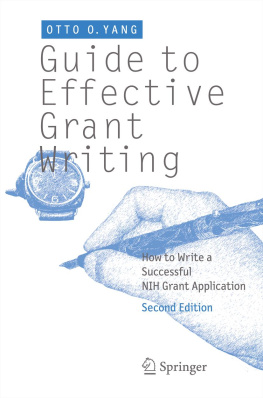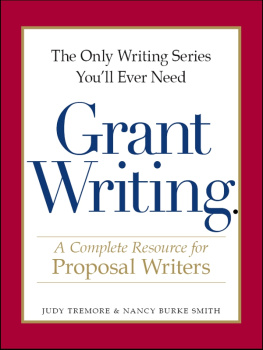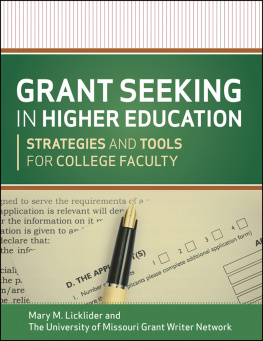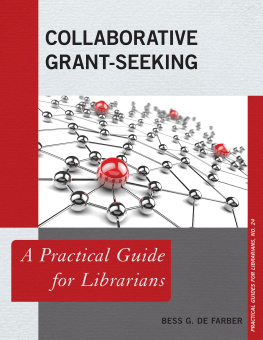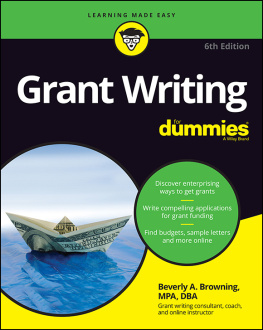Otto O. Yang Guide to Effective Grant Writing 2nd ed. 2012 How to Write a Successful NIH Grant Application 10.1007/978-1-4614-1581-7_1 Springer Science+Business Media, LLC 2012
1. Overview: Overall Goals When Writing Grant Applications
Abstract
Getting ( and keeping ) the attention of the reviewers . A research laboratory can be considered analogous to a business in many ways. Like a business, there is management of workers and finances to make products (data). Also like a business, income must be earned in a competitive process. Grant applications are the presentation of your work to persons who decide whether they want to invest and buy, much like the role of product advertisements for a business. Clearly, having products that are so superior or important that they sell themselves is ideal, but most are usually in competition with other similar products. The manner in which your products are presented to potential investors and buyers is absolutely crucial, to convince them to choose yours over others. Much like for a harried consumer, the attention of a reviewer needs to be quickly captured and sustained, to sell your ideas effectively.
Getting ( and keeping ) the attention of the reviewers . A research laboratory can be considered analogous to a business in many ways. Like a business, there is management of workers and finances to make products (data). Also like a business, income must be earned in a competitive process. Grant applications are the presentation of your work to persons who decide whether they want to invest and buy, much like the role of product advertisements for a business. Clearly, having products that are so superior or important that they sell themselves is ideal, but most are usually in competition with other similar products. The manner in which your products are presented to potential investors and buyers is absolutely crucial, to convince them to choose yours over others. Much like for a harried consumer, the attention of a reviewer needs to be quickly captured and sustained, to sell your ideas effectively.
Presenting your research ideas in a grant application therefore shares some principles with advertising. A major goal is to convey the major points in a very efficient, succinct, and interesting manner, much like a television commercial needs to convey its message in 15 s. Grant applicants often assume that the reviewers will comb through their application in great depth and perfect understanding, but this is analogous to expecting a consumer to pay deep attention to an advertisement. Of course the grant reviewers will spend time and energy trying to absorb the presented material, but minimizing the required effort to do so is important, just as in advertising. The more interesting and less laborious the process of reading the application, the more likely it is to be received positively.
Balancing between clarity and depth . Unlike commercial advertising, however, the target audience for a grant application is knowledgeable about the area you are discussing. The reviewers will be experts in related areas of research, and the depth of your thinking and technical capabilities will need to be conveyed. This means that there is a fine balance between being succinct vs. being thorough in the material you present. The extremes are presenting the ideas in broad strokes vs. presenting a comprehensive list of detailed experimental protocols. Deciding where to set the balance between these extremes is one of the more challenging aspects of grant writing, because this varies depending on the specific project and context. However, there are a few general principles that can assist in finding this balance.
Careful organization of your application can increase the information you can include without losing clarity. For example, making the Specific Aims section a very clear summary of your ideas without technical details, and confining those details to highly organized sections directly pertinent to each stated aim can allow you to present a large volume of details without clutter. This is analogous to describing a piece of machinery with many parts: if the machine is first explained with all the parts in place, it is easy for the reader to see the importance of each part and how the machine will work. In contrast, if the parts are simply listed along with a description of how they should fit together, it is far more difficult and tedious to understand.
Being strategic in choosing the details to include or exclude is another method to simplify the balancing of clarity and detail. The ultimate goal of your experimental descriptions is to convince the reviewers that the work is feasible in your hands. Your explanations should be prioritized to meet that goal, rather than being an exhaustive display of your knowledge. The emphasis and detail should be just enough to show that you have put full thought into the key issues. For example, you should describe a novel technique in great detail, documenting the sources of all reagents and potential technical pitfalls, while you should describe a common technique in broad outlines. If you spend equal effort describing both, it gives the impression that you dont really understand what is important and where to focus your efforts. Thus you should tailor the material and emphasis in your proposal, to show the reviewers you are thinking and prioritizing, and to avoid unnecessarily bogging down your application with unneeded details.
Telling an interesting story: the art behind writing the application . Research progress is very much like an ongoing story, with plot twists and surprises. A well-written application creates a tale that appeals to the reader. The plot is revealed in the Specific Aims and Significance sections, laying out a self-contained story. Unlike a novel, however, the story is unfinished. After the plot is presented, the reviewers should be curious about what happens next, and the questions you propose (the aims) should reveal how you will unfold the next chapter. By the time the reader has finished reading the Specific Aims and Significance sections, the full context for your questions should be clear, and the issues addressed by the aims should already be on his or her mind as interesting questions. Ideally, assessing the aims for your project, the reviewer should think Aha; that is what I would do next, or better yet, That is a clever way to address these important issues; I never would have thought of that.
This analogy to a novel can be instructive for how you will arrange the information. If you have multiple lines of investigation, it is crucial to tie them together, like multiple plots in a story. All the pieces should come together, without extraneous information. A common mistake is the tendency to use the introductory sections to showcase comprehensive and exhaustive knowledge, without a clear thread of thought. This rarely impresses a reviewer, and demonstrating how you think and prioritize is far more important than displaying your breadth of knowledge in your research area. By analogy, it is more interesting to read a well-written novel than a volume of an encyclopedia.
Otto O. Yang Guide to Effective Grant Writing 2nd ed. 2012 How to Write a Successful NIH Grant Application 10.1007/978-1-4614-1581-7_2 Springer Science+Business Media, LLC 2012
2. Organization and Use of This Guide

